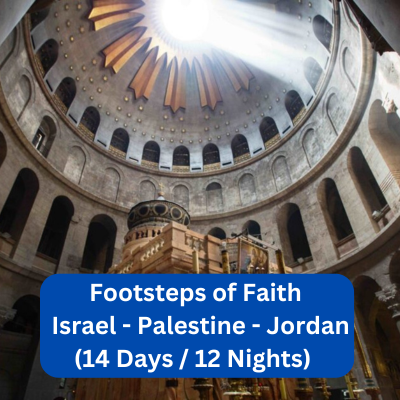Top 10 Pilgrimage Sites in Jerusalem

1. Church of the Holy Sepulchre
The Church of the Holy Sepulchre is one of Christianity’s most sacred sites, believed to be the place where Jesus was crucified, buried, and resurrected. This awe-inspiring church, with its centuries-old traditions and diverse Christian denominations, serves as a focal point for pilgrimage and worship. Pilgrims journey to the Holy Sepulchre to walk in the footsteps of Jesus, to venerate the Stone of Anointing and the Tomb of Christ, and to experience the profound mystery of redemption and resurrection. The church’s interior is a labyrinth of chapels, altars, and sacred spaces, each adorned with intricate artwork and religious icons that reflect the rich tapestry of Christian faith and devotion.
Visitors to the Church of the Holy Sepulchre can explore its hallowed halls, pausing to pray at the site of the Crucifixion or to light candles in the Chapel of the Angel. The air is heavy with the scent of incense, mingling with the murmured prayers of pilgrims from around the world. The atmosphere is charged with reverence and awe, as worshippers seek solace and spiritual renewal in the presence of the divine. For Christians, the Holy Sepulchre represents the very heart of their faith, a sacred space where the promise of salvation is made manifest in the enduring power of Christ’s resurrection.
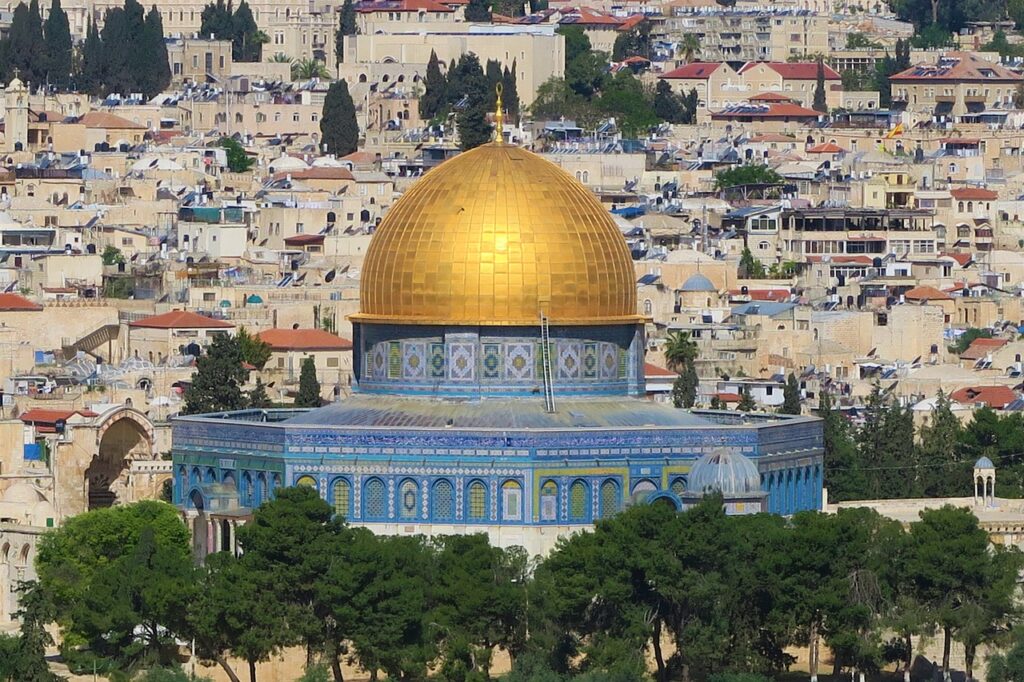
2.Dome of the Rock and Al-Aqsa Mosque
The Dome of the Rock and Al-Aqsa Mosque, located atop the Temple Mount, hold immense significance for Muslims worldwide. The golden dome of the Rock marks the spot where Muslims believe the Prophet Muhammad ascended to heaven on his Night Journey. Adjacent to the Dome, the Al-Aqsa Mosque is one of Islam’s holiest sites, serving as a place of worship and spiritual contemplation for centuries. Pilgrims visit these revered sites to pray, reflect, and connect with the spiritual legacy of Islam. The majestic beauty of the Dome of the Rock, with its intricate mosaics and elegant architecture, inspires awe and reverence in all who behold it.
The sprawling complex of the Temple Mount, known as Haram al-Sharif in Arabic, encompasses not only the Dome of the Rock and Al-Aqsa Mosque but also numerous other sacred sites and historical landmarks. Pilgrims can explore the expansive esplanade, soaking in the atmosphere of devotion and prayer that permeates this sacred space. The call to prayer echoes across the Mount, summoning the faithful to gather and worship in unity and humility. For Muslims, the Dome of the Rock and Al-Aqsa Mosque represent the spiritual heart of Jerusalem, a sanctuary of peace and prayer where the divine presence is palpable and profound.
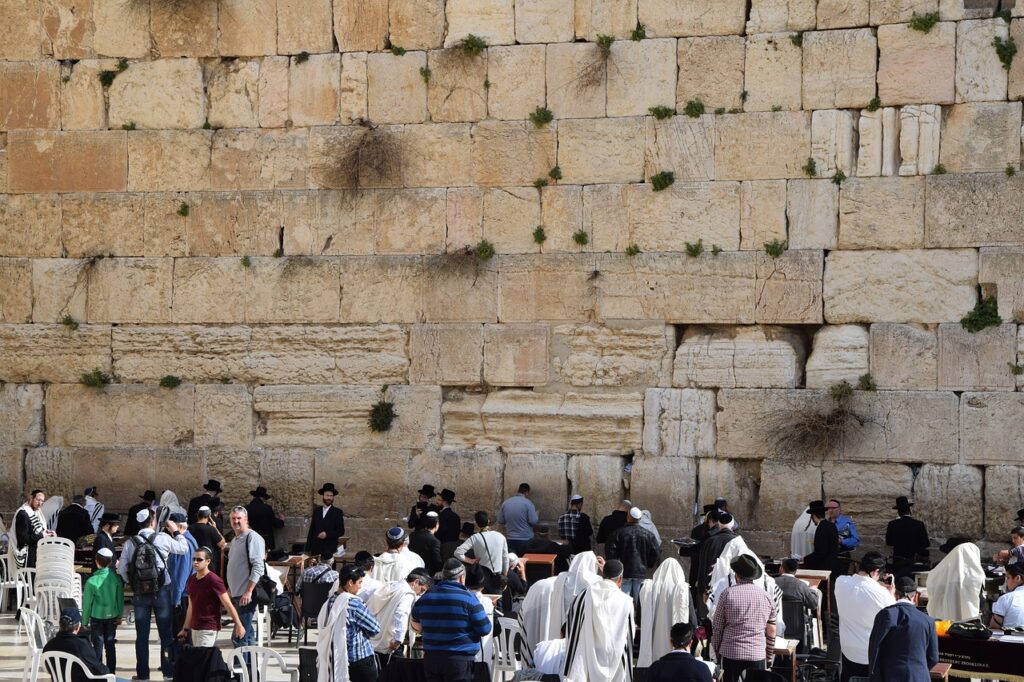
3. Western Wall (Wailing Wall)
The Western Wall, also known as the Wailing Wall, stands as an iconic symbol of Jewish faith and resilience. This ancient limestone wall is part of the retaining wall of the Second Temple complex and is revered as the holiest site in Judaism. Pilgrims from around the world gather here to pray, recite scriptures, and leave written prayers in the cracks of the wall, seeking a connection to their spiritual heritage and the collective memory of their ancestors. The atmosphere at the Western Wall is charged with emotion and devotion, as pilgrims engage in centuries-old rituals and traditions that reaffirm their faith and identity.
The Western Wall Plaza, adjacent to the wall, serves as a focal point for prayer gatherings, celebrations, and commemorations. Visitors can witness the fervent devotion of worshippers as they approach the wall, their heads bowed in reverence, their prayers whispered or written on scraps of paper. The ancient stones of the Western Wall bear witness to the enduring faith of the Jewish people and serve as a tangible link to the sacred history of Jerusalem.
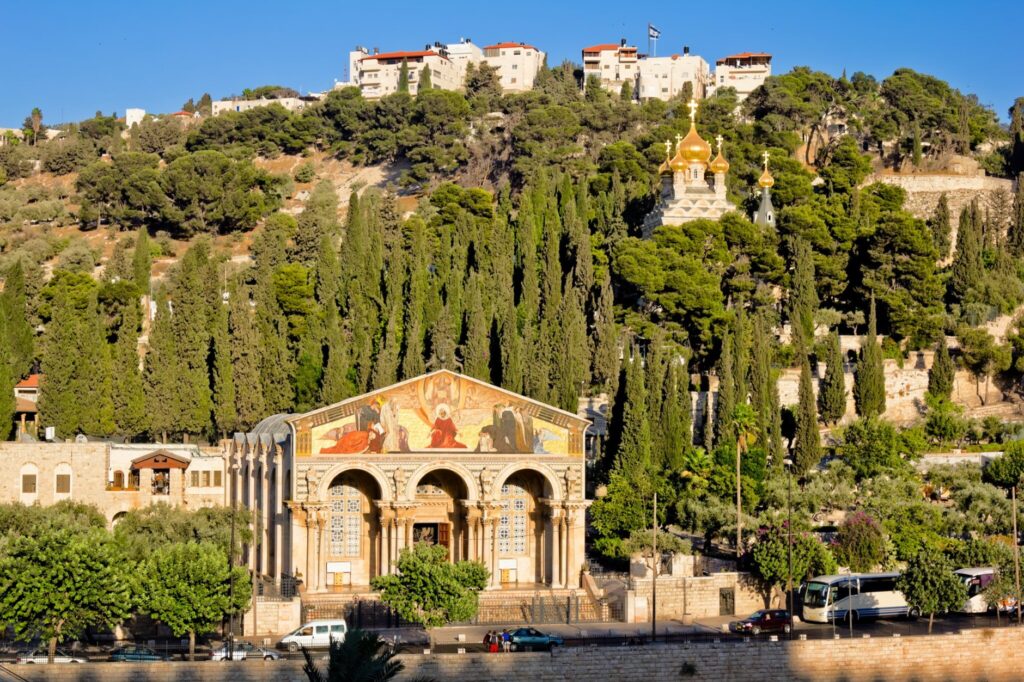
4. Mount of Olives
The Mount of Olives, overlooking the Old City of Jerusalem, holds profound significance in Jewish, Christian, and Islamic traditions. This sacred mountain is associated with key events in the life of Jesus, including his teachings, arrest, and ascension. Pilgrims journey to the Mount of Olives to visit the Church of All Nations, Gethsemane Garden, and the Chapel of the Ascension, seeking solace and spiritual renewal in the shadow of ancient olive trees. The Mount of Olives offers breathtaking views of the city below, providing pilgrims with a panoramic perspective of Jerusalem’s sacred landscape and storied history.
The atmosphere on the Mount of Olives is imbued with a sense of reverence and contemplation, as pilgrims walk in the footsteps of Jesus and reflect on the mysteries of faith. The Garden of Gethsemane, with its gnarled olive trees and serene ambiance, invites visitors to pause and pray, to connect with the anguish and surrender of Christ on the eve of his crucifixion. The Chapel of the Ascension, a modest octagonal structure marking the spot where Jesus is said to have ascended to heaven, serves as a place of pilgrimage and devotion for Christians from around the world.

5.Garden Tomb
Christ Church College, one of the largest and most prestigious colleges The Garden Tomb, located near the Damascus Gate, is revered by many Christians as the possible site of Jesus’ burial and resurrection. This tranquil garden, with its rolling green lawns and ancient rock-cut tomb, offers pilgrims a serene setting for prayer, meditation, and reflection. Visitors to the Garden Tomb are invited to explore the site’s peaceful surroundings, to participate in worship services, and to contemplate the central tenets of the Christian faith. The atmosphere at the Garden Tomb is one of reverence and awe, as pilgrims gather to honor the memory of Jesus and to celebrate the promise of new life and resurrection.
The Garden Tomb is steeped in biblical history and tradition, with its rock-hewn tomb bearing witness to the events of Easter morning. Pilgrims can walk through the garden’s winding pathways, pausing to pray at the tomb or to sit in quiet contemplation beneath the shade of ancient olive trees. The Garden Tomb serves as a place of pilgrimage and spiritual retreat, offering believers a tangible connection to the sacred story of Jesus’ death and resurrection. For Christians, the Garden Tomb is a place of profound significance, where faith meets history, and the promise of salvation is eternally renewed.
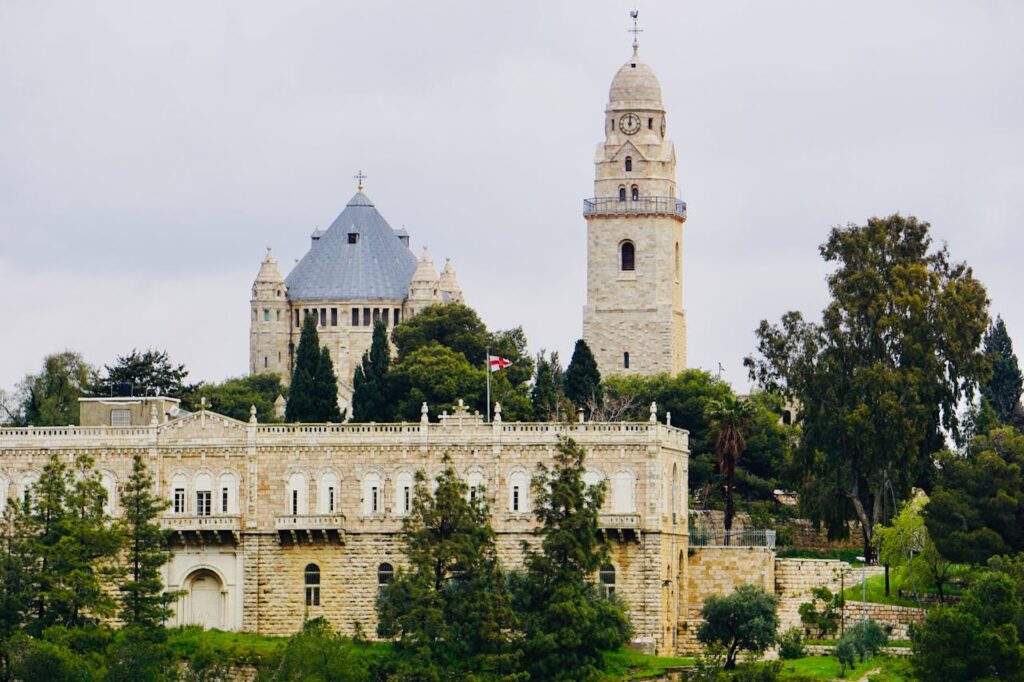
6. Mount Zion
Mount Zion, situated just outside the walls of the Old City, holds deep religious significance for Jews, Christians, and Muslims alike. This sacred hill is associated with key events in biblical history, including King David’s conquest of Jerusalem and the Last Supper of Jesus. Pilgrims ascend Mount Zion to visit the Room of the Last Supper, the Tomb of King David, and the Dormition Abbey, seeking spiritual insights and divine blessings in this hallowed place. The atmosphere on Mount Zion is one of reverence and devotion, as pilgrims from different faith traditions come together to honor the sacred legacy of the Holy City.
The Room of the Last Supper, located on the upper floor of the traditional site of King David’s Tomb, serves as a place of worship and prayer for Christians commemorating Jesus’ final meal with his disciples. The Tomb of King David, with its timeless significance, is a place of pilgrimage and veneration for Jews, who honor the memory of Israel’s greatest king. The Dormition Abbey, with its striking architecture and panoramic views of Jerusalem, commemorates the Assumption of the Virgin Mary and serves as a place of pilgrimage for Christians seeking spiritual renewal and inspiration. Mount Zion offers pilgrims a sacred space for reflection, prayer, and contemplation, inviting them to connect with the divine presence that permeates this ancient landscape
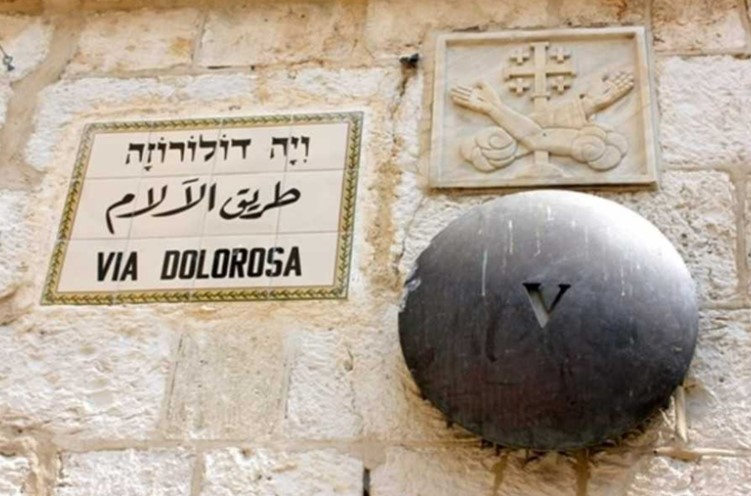
7. Via Dolorosa (Way of the Cross)
The Via Dolorosa, or Way of the Cross, is a revered pilgrimage route that traces the final steps of Jesus from his condemnation to his crucifixion and burial. This ancient pathway winds through the narrow streets of the Old City, passing by 14 stations that commemorate key events in Jesus’ Passion. Pilgrims from around the world walk the Via Dolorosa, retracing Jesus’ journey with reverence and devotion, pausing at each station to reflect on the meaning of his sacrifice and the promise of redemption. The Via Dolorosa is a poignant reminder of Jesus’ suffering and sacrifice, inviting pilgrims to share in his journey and to draw closer to the heart of their faith.
Along the Via Dolorosa, pilgrims encounter the diverse sights, sounds, and smells of Jerusalem’s bustling streets, immersing themselves in the vibrant tapestry of daily life in the Holy City. The route culminates at the Church of the Holy Sepulchre, where Jesus is believed to have been crucified and buried, offering pilgrims a profound encounter with the central mystery of the Christian faith. The atmosphere on the Via Dolorosa is charged with emotion and devotion, as worshippers from different cultures and traditions come together to honor the memory of Jesus’ Passion and to seek forgiveness, redemption, and renewal.
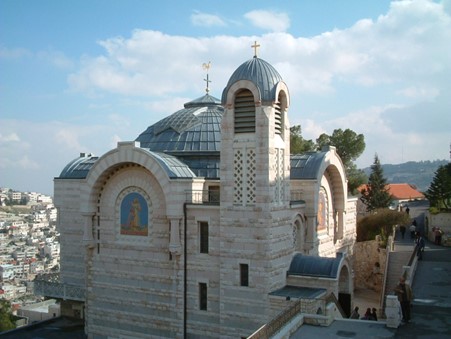
8. Church of St. Peter in Gallicantu
The Church of St. Peter in Gallicantu, perched on the slopes of Mount Zion, is dedicated to the Apostle Peter and commemorates his denial of Jesus before his crucifixion. This historic church, with its striking architecture and panoramic views of Jerusalem, offers pilgrims a sacred space for prayer, worship, and contemplation. Visitors to St. Peter in Gallicantu can explore the underground chambers, view ancient artifacts, and participate in religious services, experiencing a profound sense of spiritual connection and renewal. The church’s location, overlooking the Kidron Valley and the walls of the Old City, provides pilgrims with a breathtaking backdrop for their spiritual journey.
The Church of St. Peter in Gallicantu stands as a testament to the enduring faith and resilience of the Christian community, offering pilgrims a tangible connection to the events of Holy Week and the passion of Christ. The underground chambers, believed to be the site of Peter’s denial and imprisonment, evoke a sense of humility and awe in visitors, reminding them of the human frailty and divine grace that define the Christian experience. For believers, St. Peter in Gallicantu is a place of pilgrimage and prayer, where the promise of forgiveness and redemption is made manifest in the shadow of the Cross.

9.Church of St. Anne and Pools of Bethesda
The Church of St. Anne, located in the heart of Jerusalem’s Old City, is a revered pilgrimage site that honors the mother of the Virgin Mary. This ancient Crusader church, with its Romanesque architecture and serene atmosphere, invites pilgrims to pause and reflect on the role of St. Anne in the Christian tradition. The church’s acoustics are renowned for their exceptional quality, making it a popular destination for choral performances and musical worship services. Pilgrims can participate in religious services, including Mass and liturgical chants, experiencing a sense of spiritual connection and renewal in this sacred space.
Adjacent to the Church of St. Anne lies the Pools of Bethesda, a site mentioned in the New Testament where Jesus performed a miraculous healing. The pools, with their tranquil waters and historic ruins, offer pilgrims a tangible connection to the life and ministry of Jesus, inviting them to meditate on the themes of healing and restoration. Visitors can explore the archaeological remains and walk in the footsteps of Jesus, experiencing the power of faith and prayer in the face of adversity. The Church of St. Anne and Pools of Bethesda are symbols of hope and healing, where pilgrims from around the world come to seek solace, inspiration, and divine intervention.
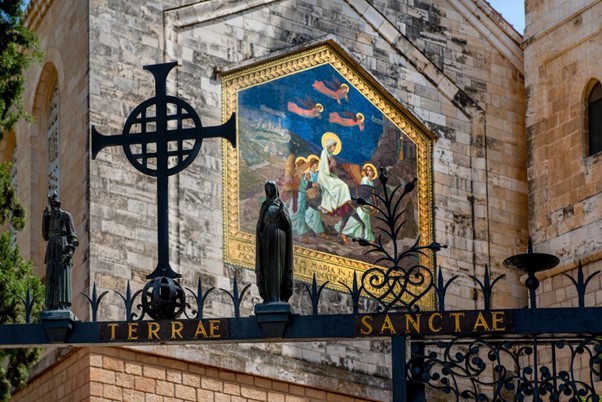
10. Ein Karem
Ein Karem, a picturesque village nestled in the hills on the outskirts of Jerusalem, is renowned as the traditional birthplace of John the Baptist. This charming neighborhood, with its narrow stone pathways and ancient churches, exudes a peaceful ambiance that beckons pilgrims to immerse themselves in the story of John’s miraculous conception and birth. The Church of the Visitation, a focal point of pilgrimage in Ein Karem, commemorates the Virgin Mary’s visit to her cousin Elizabeth, an event celebrated in the Gospel of Luke. Pilgrims can explore the church’s beautifully adorned interior, which houses a striking statue of Mary and Elizabeth and a tranquil courtyard where they can pause for prayer and reflection.
Ein Karem’s rich religious heritage extends beyond the Church of the Visitation, with numerous other churches and shrines dotting the landscape. The Church of St. John the Baptist, built atop the traditional site of John’s birth, invites pilgrims to honor the prophet’s pivotal role in preparing the way for Jesus. The spring of Ein Karem, believed by tradition to be the site where Mary drank water during her visit to Elizabeth, remains a source of spiritual nourishment for pilgrims seeking renewal and blessing.


